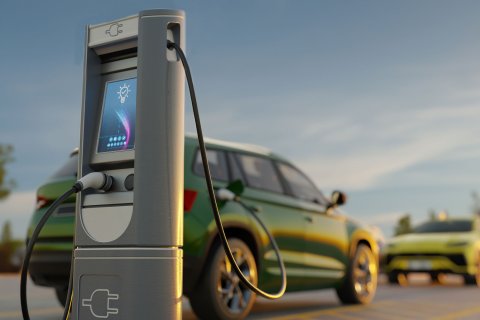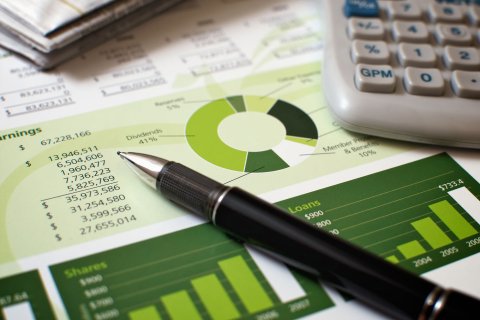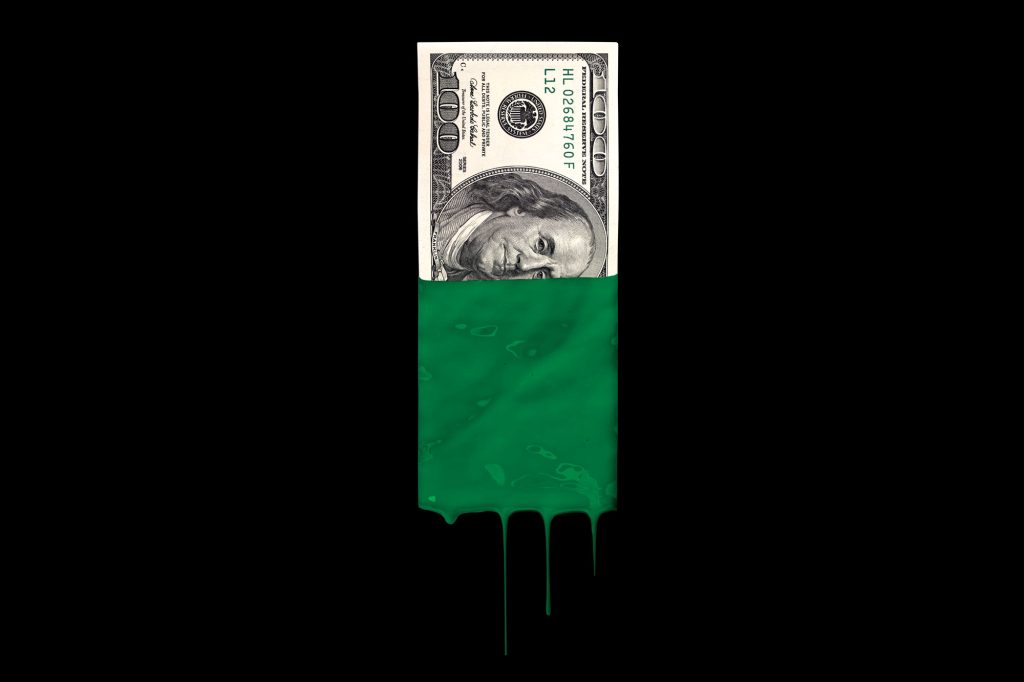From using reusable bags and paper straws to turning up (or down) our thermostats when the temperature is at extremes, we’re all looking for ways to make more sustainable choices these days. That increasingly extends to the decisions that we make about our money, as a growing number of financial services companies have introduced green product options, from mortgages and car loans to credit card, savings and checking accounts.
“Green financial products are a natural evolution of what conscious customers want,” says Jay Lipman, co-founder and president of Ethic, an asset manager that works with investors and wealth advisors on sustainable investing.
Four in 10 U.S. consumers say they’re interested in enrolling in a green-linked financial product, according to data from McKinsey, with two-thirds of them saying they’d allot up to 40 percent or more of their savings or credit card spending to such a product. And the interest cuts across demographic lines, shared by city dwellers, suburbanites and rural residents, and by people of all income levels.
With so many new green financial offerings on the market, though, it can be hard to figure out which ones make sense for your financial situation—and which ones are actually delivering on their environmental promises versus those that are simply greenwashing.
Here’s a look at some of the green financial products on the market—and what you need to know before deciding whether they’re right for you.

GREEN MORTGAGES
Some mortgage lenders will provide more favorable financing terms for incorporating eco-conscious product options like Energy Star appliances and programmable thermostats into your new home, as well as for bigger projects like upgrading your HVAC system or installing new windows, solar panels or insulation.
Available through lenders that offer conventional mortgages backed by Fannie Mae or Freddie Mac, “Energy Efficient Mortgages” typically allow homeowners to borrow an additional 15 percent of a home’s value for green improvements approved by an energy assessor. The additional funds remain in an escrow account until used, and the improvements must be made within six months. (There are also EEM programs available through mortgages backed by the Department of Veterans Affairs and the U.S. Department of Agriculture, with slightly different rules).

Look for a lender that provides EEM mortgages (any lender that does home improvement loans should be able to make an EEM loan) at the start of your search if you’re using the mortgage to purchase a home. That’s because it may take time to get the home assessor in and quotes from contractors, so you’ll want to start that process right away.
“If you already found the house and made an offer, but then you want to switch to a green mortgage, you’re swimming upstream and could delay your closing,” says Kevin Kane, chief economist with Green Homeowners United.
Already a homeowner and looking instead for a loan to finance a specific green home improvement project, like upgrading your insulation, installing energy-efficient windows or moving to a more efficient heating and cooling system? With mortgage rates near 8 percent lately, it doesn’t make sense to free up cash by refinancing, particularly if you locked in a 2 percent or 3 percent mortgage rate a few years ago. But there are a growing number of subsidized loans available to consumers for projects that fall between $2,500 and $35,000, says Matthew Brown, co-chair and founder of the National Energy Improvement Fund.
To find these loans, first check your utility company’s website. Many utilities facilitate no- or low-cost loans for eco-smart projects, such as those that improve a home’s energy efficiency, with terms tied to the life of the equipment; some allow consumers to pay them off through their monthly utility payments. If your utility is not among them, check your state energy department’s website for similar programs, or look for a contractor that offers financing via the contractor directory at NEIF.org.
The availability of favorable financing for energy improvement home projects is set to dramatically rise over the next few years as additional money for subsidized loans flows to the states under the Inflation Reduction Act (IRA) passed by Congress last year. “The IRA set aside $20 billion to support the creation of green banks that will provide money for interest rate buy downs or to cover the risk to a lender,” Brown says. “Financing for these improvements is going to become even more attractive than it already is.”

CREDIT CARDS
Perhaps the broadest category of eco-marketed financial products, credit cards that bill themselves as green range from cards made of recycled materials to those that donate a portion of their profits to environmental causes, to those that pay bonus rewards when you make eco-friendly purchases.
As with banks, you may want to consider the broader environmental record of the card company, since some issuers may also have other products or business lines that invest in non-Earth-friendly causes or companies. In addition, traditional cards typically offer richer rewards, so if you’re looking to quickly build points toward your dream vacation or count on the cash back from purchases to pad your emergency fund, you could be giving up more than you bargained for.
“You will almost certainly be sacrificing increased rewards to have a credit card marketed as green,” says credit card expert Jason Steele. “For some this might be worth it. Others may prefer to earn additional cash back or other rewards and donate to an environmental cause.”
That said, if you spend a lot in eco-friendly categories, it might make sense to use a green card for those purchases. The Visa Future Card, for example, pays 5 percent cash back for purchases from eco-focused partners and provides rewards for cardholders for completing “missions” such as purchasing refurbished tech or switching to electric energy at home.
Other cards send a portion of all proceeds to an environmentally friendly organization. The Green America Visa card, for example, helps fund Green America’s sustainability efforts while the Ducks Unlimited Visa rewards card supports wetlands and waterfowl conservation.
Finally, it’s worth remembering that while getting green rewards for purchases you’re making anyway may make sense, reducing consumption generally—buying fewer things in the first place—is typically the path to make the greatest impact.
“I’m far more concerned about the environmental impact of what I purchase, rather than how I purchase it,” Steele says. “However, switching to paperless statements is one easy way to reduce the impact of your credit card use.”

AUTO LOANS
If you’re purchasing a new or used electric or hybrid vehicle, some lenders offer green auto loans with discounted rates of 0.25 percent to 1 percent. The terms of these loans can vary significantly, so shop around, including getting quotes from credit unions and online lenders, to make sure you nab the best deal.
The application process for a green auto loan is similar to that of a traditional car loan, but depending on the lender, the hybrids may need to come in above a certain miles-per-gallon threshold or hold a SmartWay certification from the Environmental Protection Agency. Green auto loans are also available to current car owners looking to refinance an existing loan.
Some lenders offer additional financing to cover the cost of installing an EV charger in your home, which typically ranges from $545 to $1,374, according to homeadvisor.com. Some manufacturers will also cover this cost if you’re purchasing a new vehicle.
You may be able to further reduce the cost of your EV (and your monthly loan payments) by taking advantage of federal rebates and tax credits as well as any available state or local utility incentives. Find out which ones might be available to you by entering your zip code at Electricforall.com/rebates-incentives.

SAVINGS ACCOUNTS
A growing number of banks, fintech companies and credit unions now offer so-called “green” savings accounts, in which they offer market-rate interest but promise to invest deposits in local or environmentally friendly projects.
While large banks may offer a green or sustainable account, they may also have other divisions that invest in less eco-friendly business or initiatives. If you’re interested in a bank in which all investments use a green lens, you may want to find one that has Certified B Corporation Status (search the directory at bcorporation.net); is a member of the Global Alliance for Banking on Values (see the list of members at gabv.org); or has earned the “Just” label from the International Living Future Institute (click on the organizations database at just.living-future.org/). These certifications require banks to meet certain green standards for investments and monitor that they’re sticking to such promises over time.
“Certifications that require third-party assessments are the gold standard for consumers who are looking for trustworthy green banking options,” says Monique Johnson, senior vice president of client and community partnerships at Beneficial State Bank.
Financial institutions that regularly make the cut for these or other green certifications include Amalgamated Bank, Atmos Financial, Southern Bancorp and Spring Bank, along with many other banks and credit unions. And while consumers have indicated a willingness to settle for a lower yield on their savings in exchange for doing business with a bank in line with their climate values, according to the McKinsey report, that may not be necessary. Spring Bank’s Savings Account, for example, was recently paying 4.25 percent to customers with at least $100 in their accounts, while the Atmos Financial Climate-Positive Savings Account offers rates ranging from 1.75 percent to 3.5 percent with no minimum balance requirements and no monthly service fees.

Read the full article here














